Adaptation is essential to survival, whether you’re talking about animal species, cities, or buildings. For many decades, the area between Downtown Los Angeles and the city’s namesake river was filled with one- and two-story industrial buildings sprawling along Southern Pacific and Union Pacific railyards. With Skid Row on its western edge and the Latino communities of East L.A. across the river, this was a rugged and ragged part of town best navigated by truck or car, not by foot. As the railroads lost business and manufacturing moved farther from the urban core in the second half of the 20th century, artists began to claw out studio spaces in the cavernous shells of derelict structures. By the 1990s some realtors were calling this no-man’s-land the Arts District, based more on hope and hype than demographic fact. When the Southern California Institute of Architecture moved into an old freight depot on East 3rd Street and South Santa Fe Avenue in 2001, the area was still more war zone than gentrifying neighborhood. Today the vibe is completely different, with an outpost of Swiss contemporary art gallery Hauser & Wirth, an L.A. branch of Brooklyn’s Smorgasburg food market, Blue Bottle Coffee, a Soho House, offices of Spotify and Warner Music, and large residential developments, such as the quarter-mile-long One Santa Fe designed by Michael Maltzan, all generating once-rare foot traffic in the area.
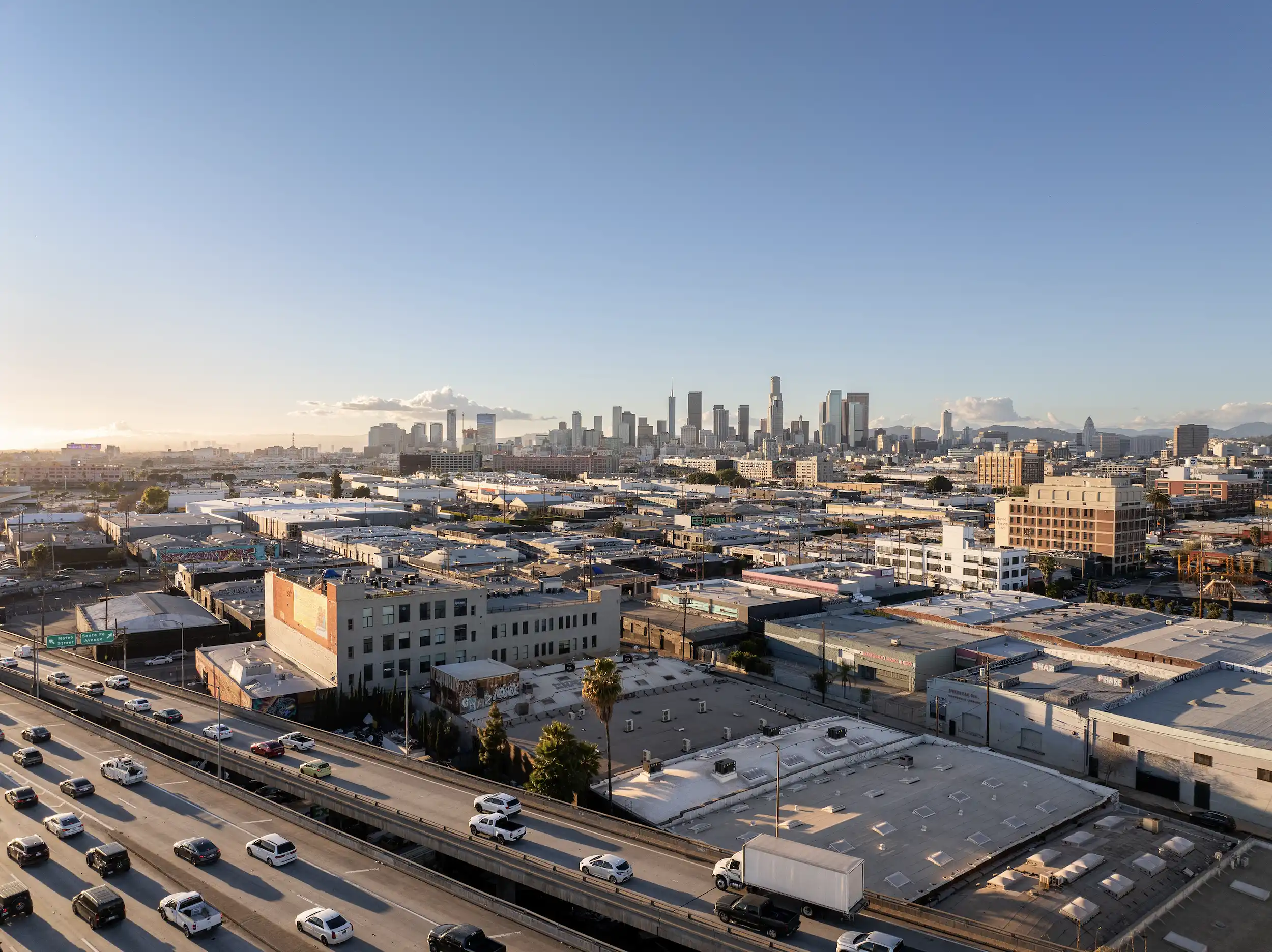
1
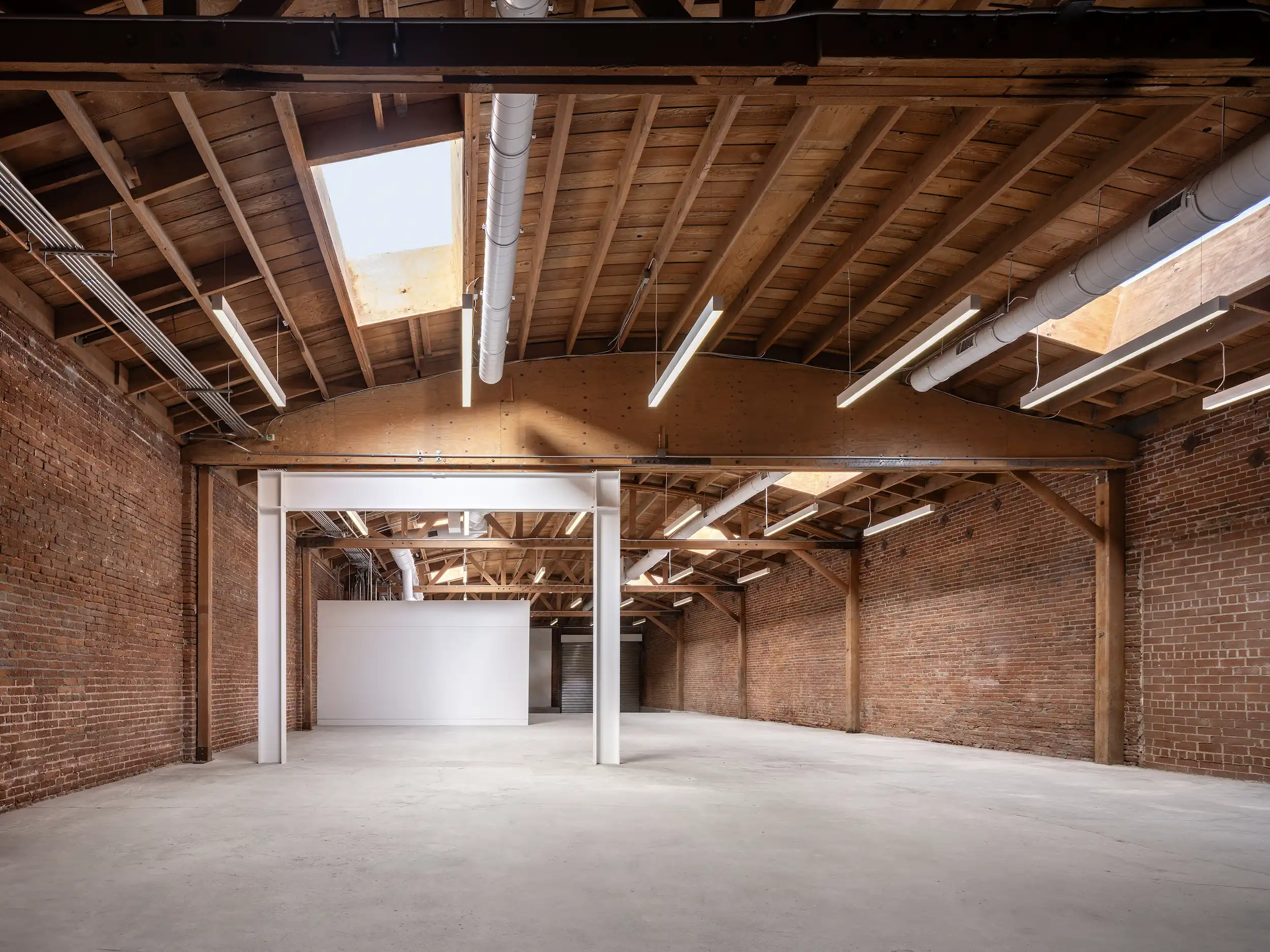
2
Aerial view of the L.A. Arts District, with downtown in the distance (1); the brawny industrial heritage of the building has been preserved, including its brick walls and wood bow-truss roof structure. Photos © Mike Kelley
When Alexander Sheft and John Farrace, principals of young L.A. architecture and interiors studio Sheft Farrace, saw the deteriorating warehouse on 8th Street near Santa Fe Avenue for the first time in 2021 it was occupied by a clothing company and a photo studio and had boxes everywhere. Their client, Multi+, was a small local developer that had done some residential projects with the architects and figured it would convert the long, narrow structure into offices. But as the number of people returning to offices post-Covid remained below expectations, the project team decided to take a flexible approach to programming, accommodating multiple functions and short-term leases. They would create a versatile building that could function as an event space one day, a gallery the next, offices for a while, and perhaps even a skate park for a time. “The idea was to stay nimble,” says Sheft.
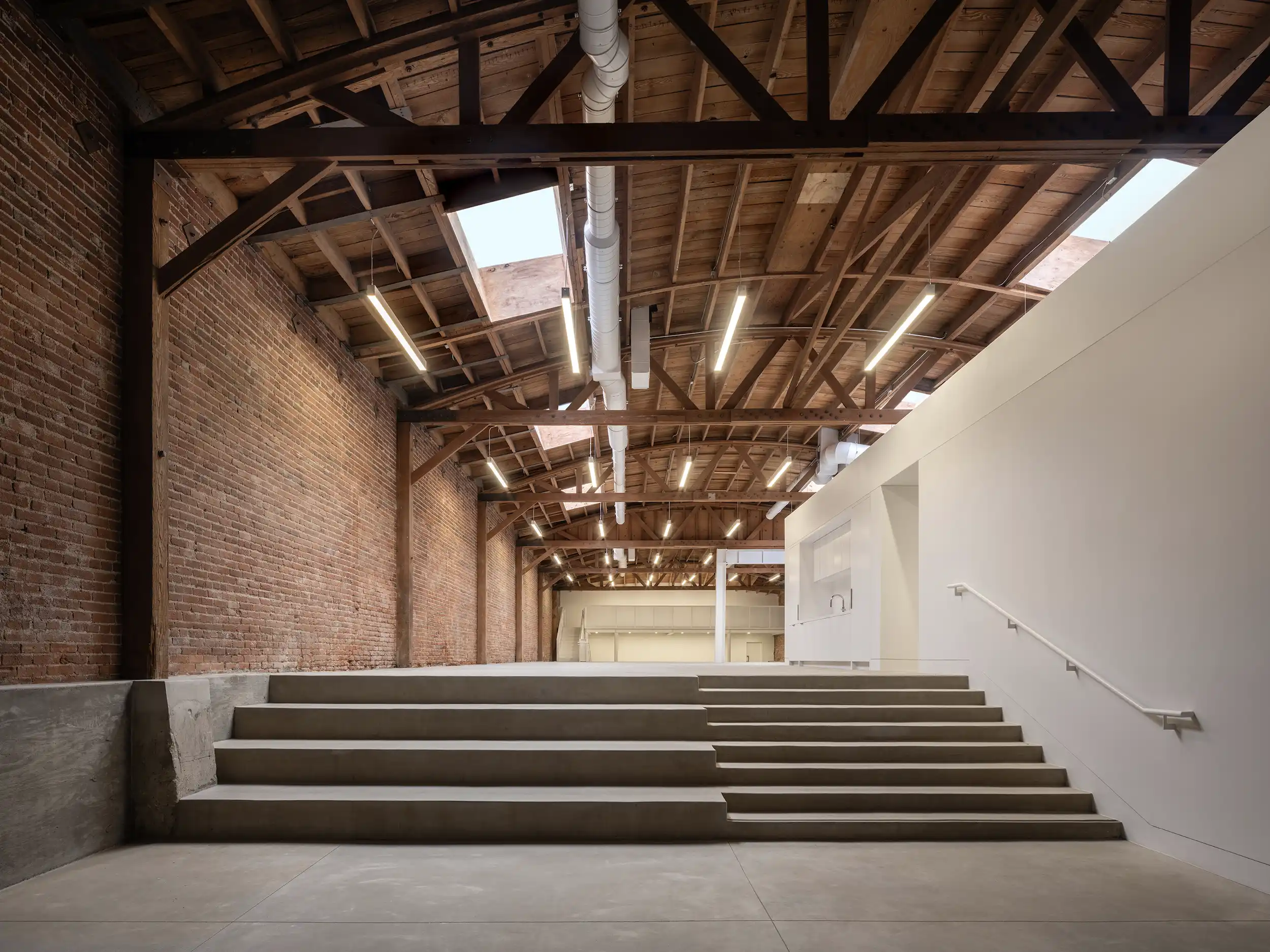
New skylights draw natural light into the cavernous space. Photo © Mike Kelley
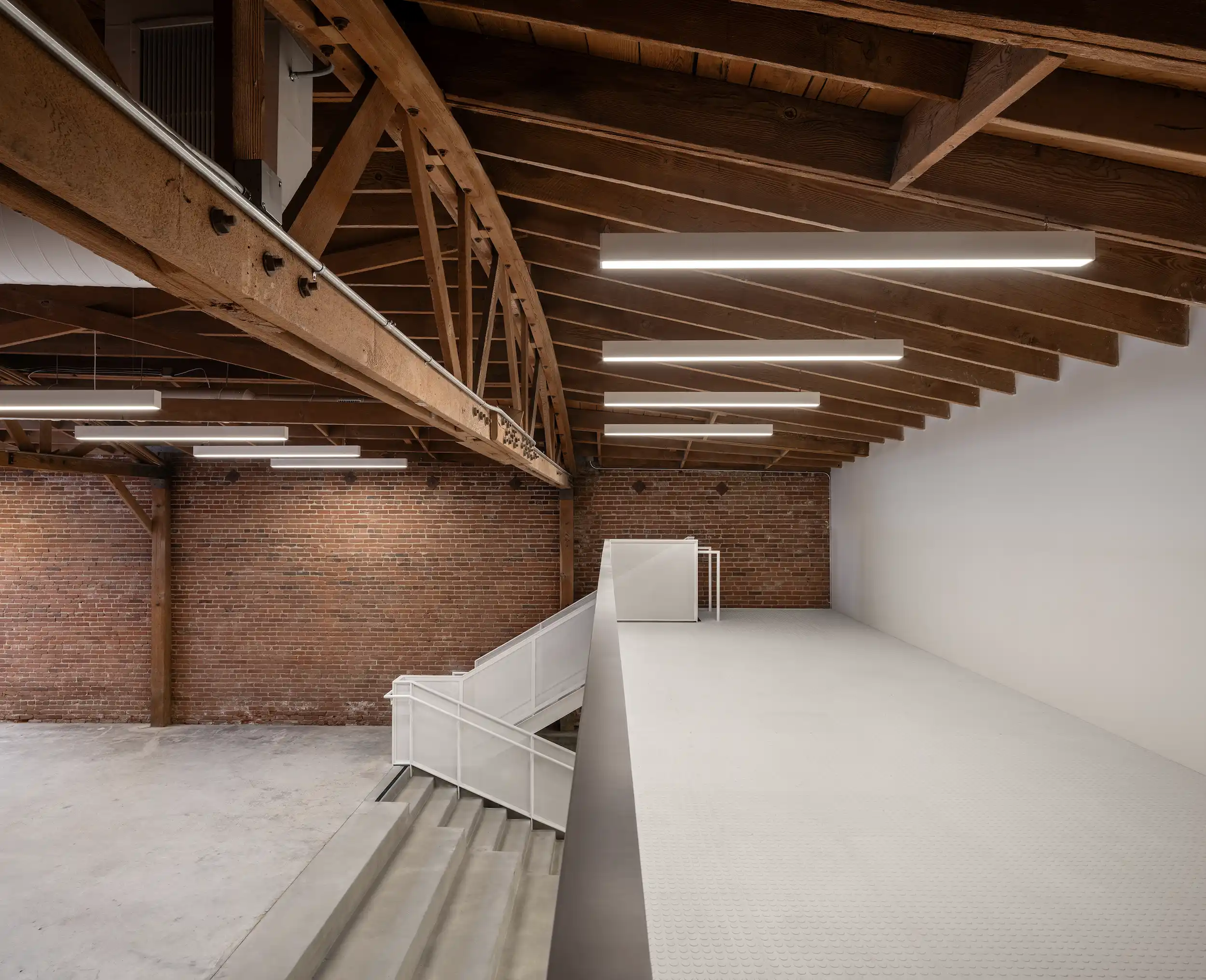
View of the new mezzanine inserted at the back of the structure. Photo © Mike Kelley
The other critical move was to lower the concrete floor in the front and rear of the building, bringing it to grade level. When the warehouse was built in the 1920s, vehicles would back up to its loading docks, so the floor was set at the height of a truck—three and a half feet above the street. By cutting away the floor at the building’s two ends and expanding openings on the front and back, the architects not only made it more accessible but used the change in floor levels to create different spaces inside. They added a new mechanical system, using light-weight units they could place on top of the roof and not muddle the interior. A new electrical system provides an abundance of outlets to accommodate flexibility of use for tenants, while suspended pendant lights emphasize the horizontal sweep of the 5,700-square-foot interior. The mezzanine offers an additional 700 square feet of space.
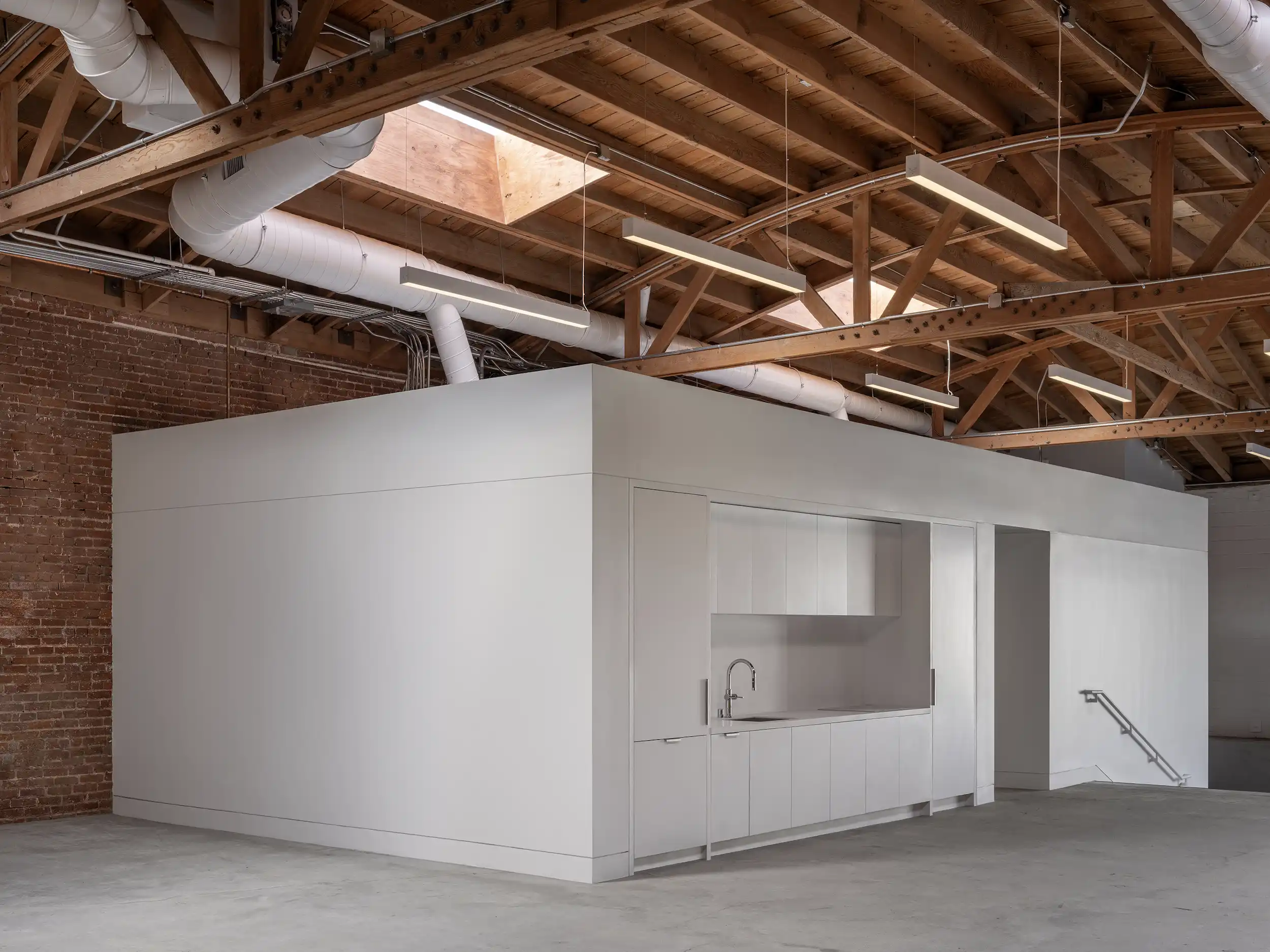
3
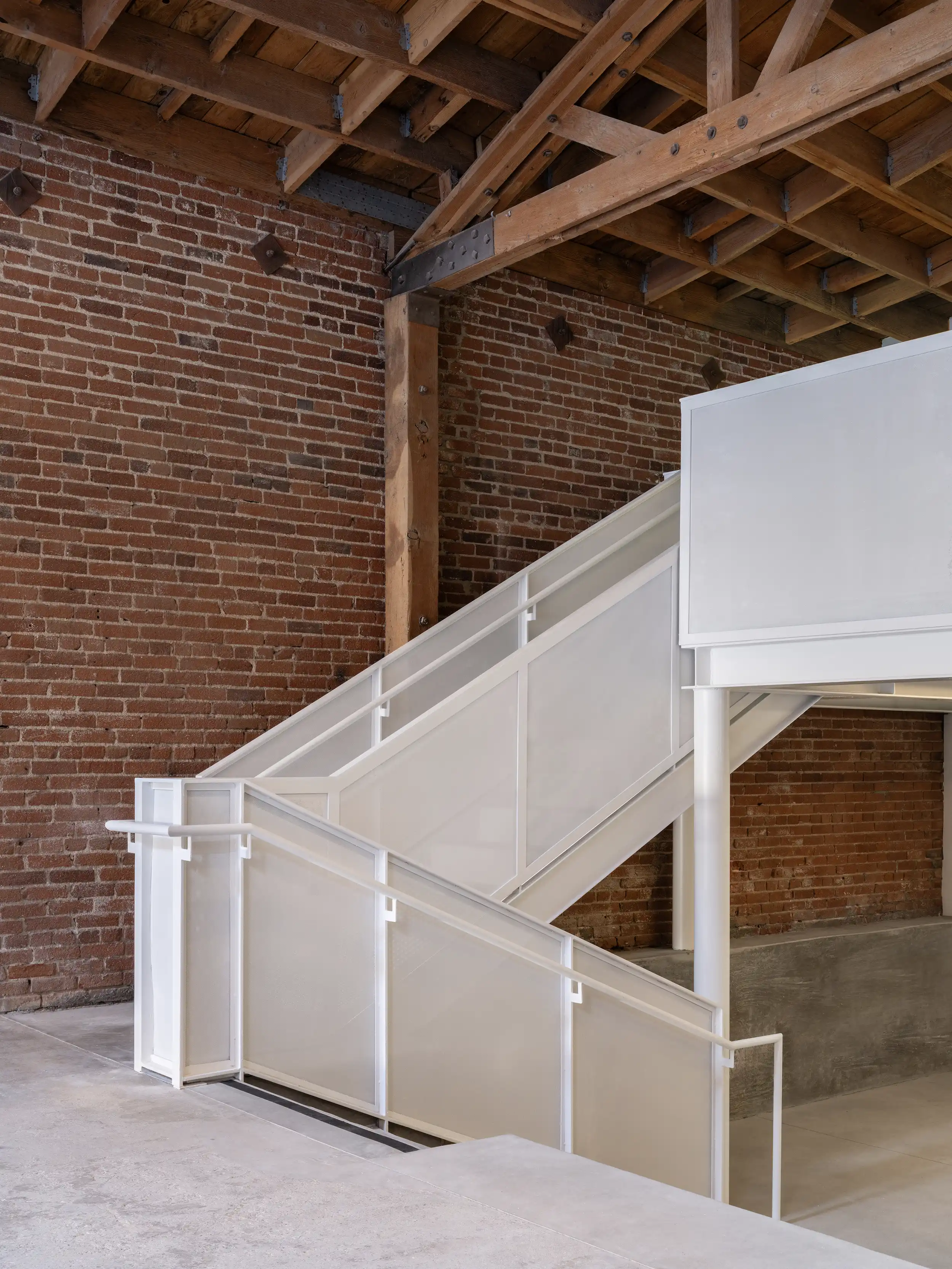
4
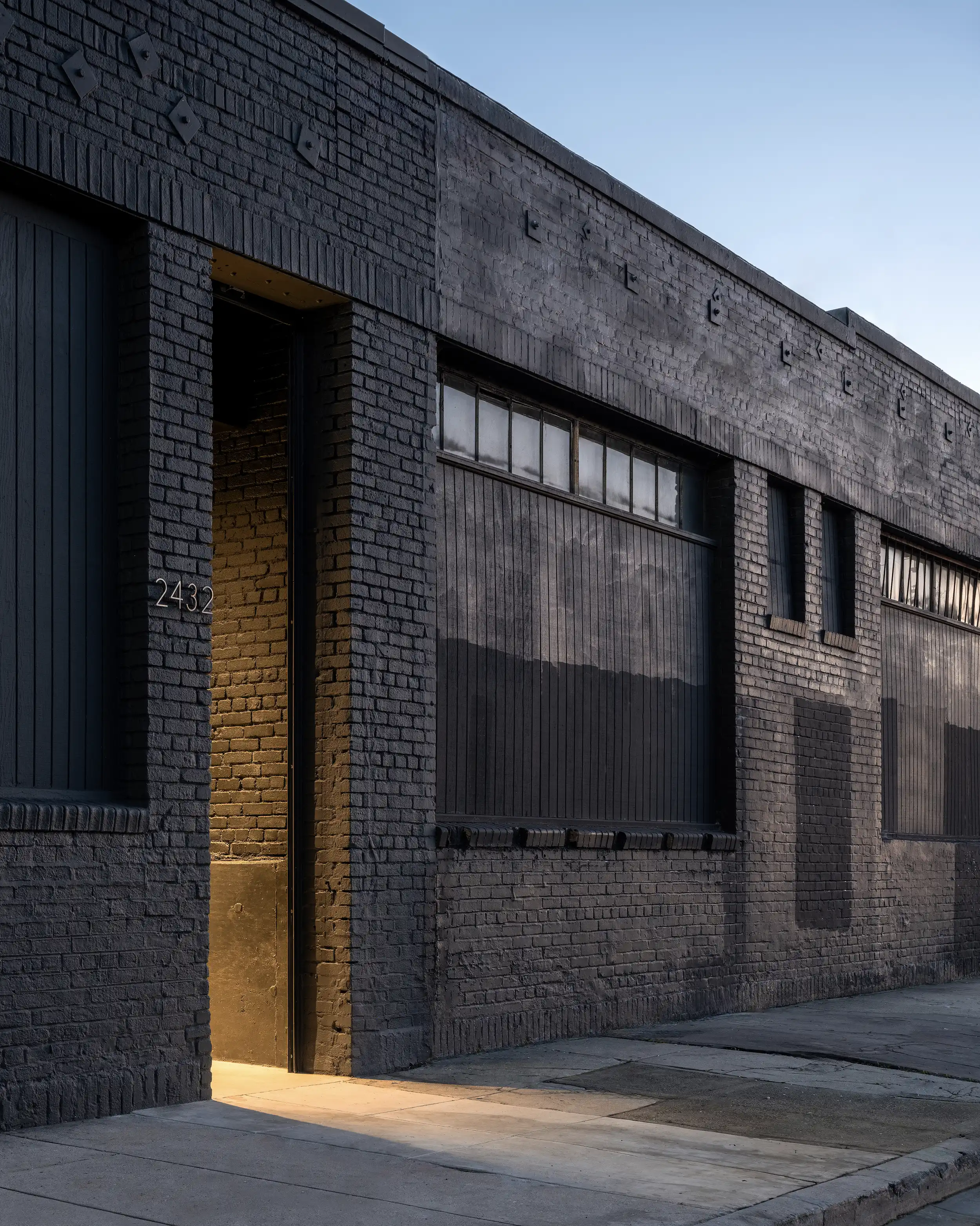
5
View of the kitchenette and bathroom insertion (3); stairs leading to mezzanine level (4); the masonry facade of the warehouse was painted black (5). Photos © Mike Kelley
On the exterior, Sheft and Farrace merely painted the old masonry black and added a second entry on the back of the building. “We wanted to keep it rough on the outside,” says Sheft, “so the inside comes as a surprise.”
In the next few years, the Arts District will continue to change as a 12-acre public park designed by Hargreaves Jones on either side of Maltzan’s new Sixth Street Viaduct is completed and work progresses on redevelopment along the L.A. River, including a cultural center by Frank Gehry and a mixed-use project by Bjarke Ingels. Evolution is the name of the game here and the 8th Street Warehouse is designed to adapt as needed.
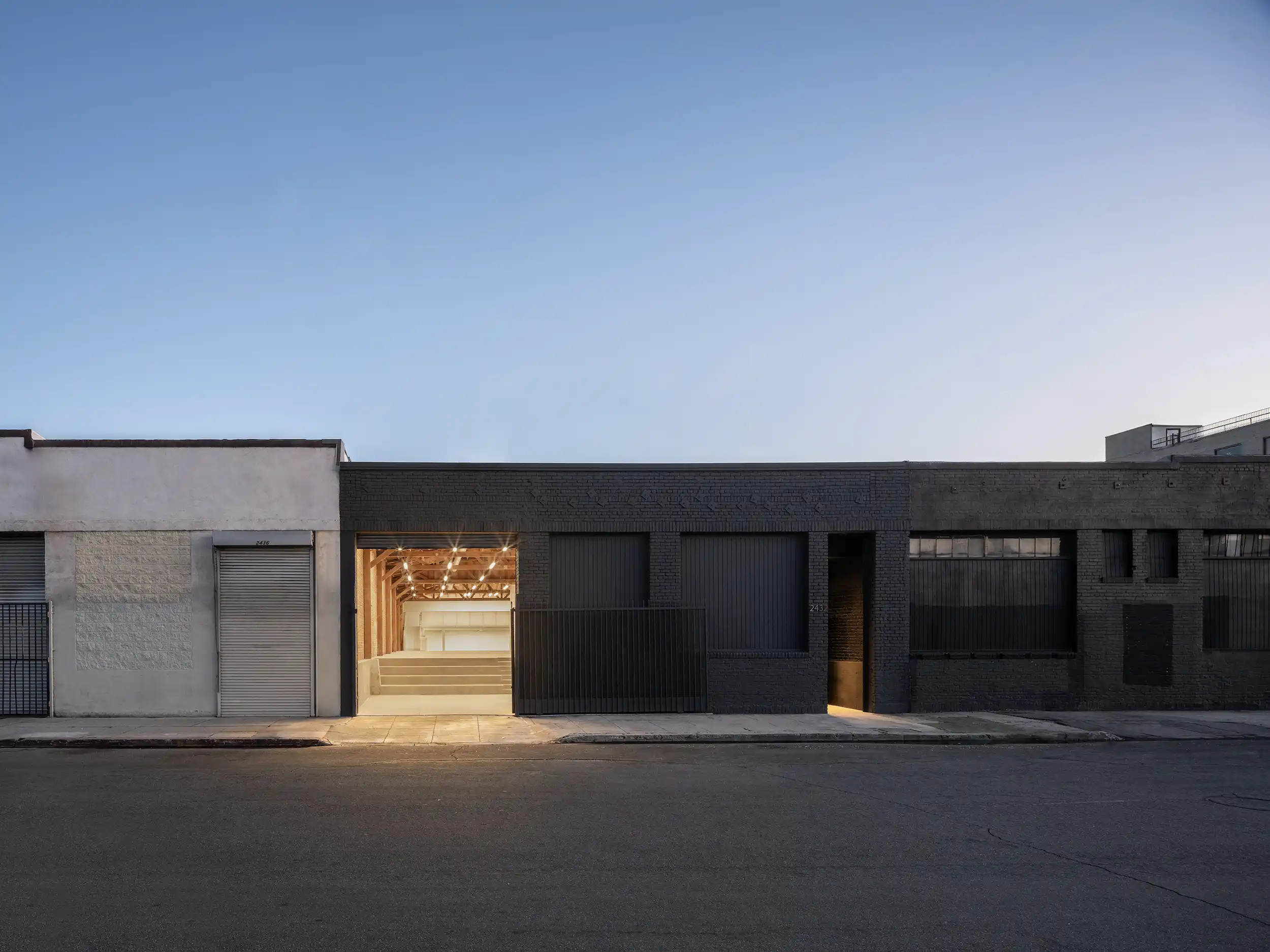
Photo © Mike Kelley
.jpg?1713468361)


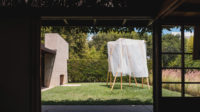

Post a comment to this article
Report Abusive Comment